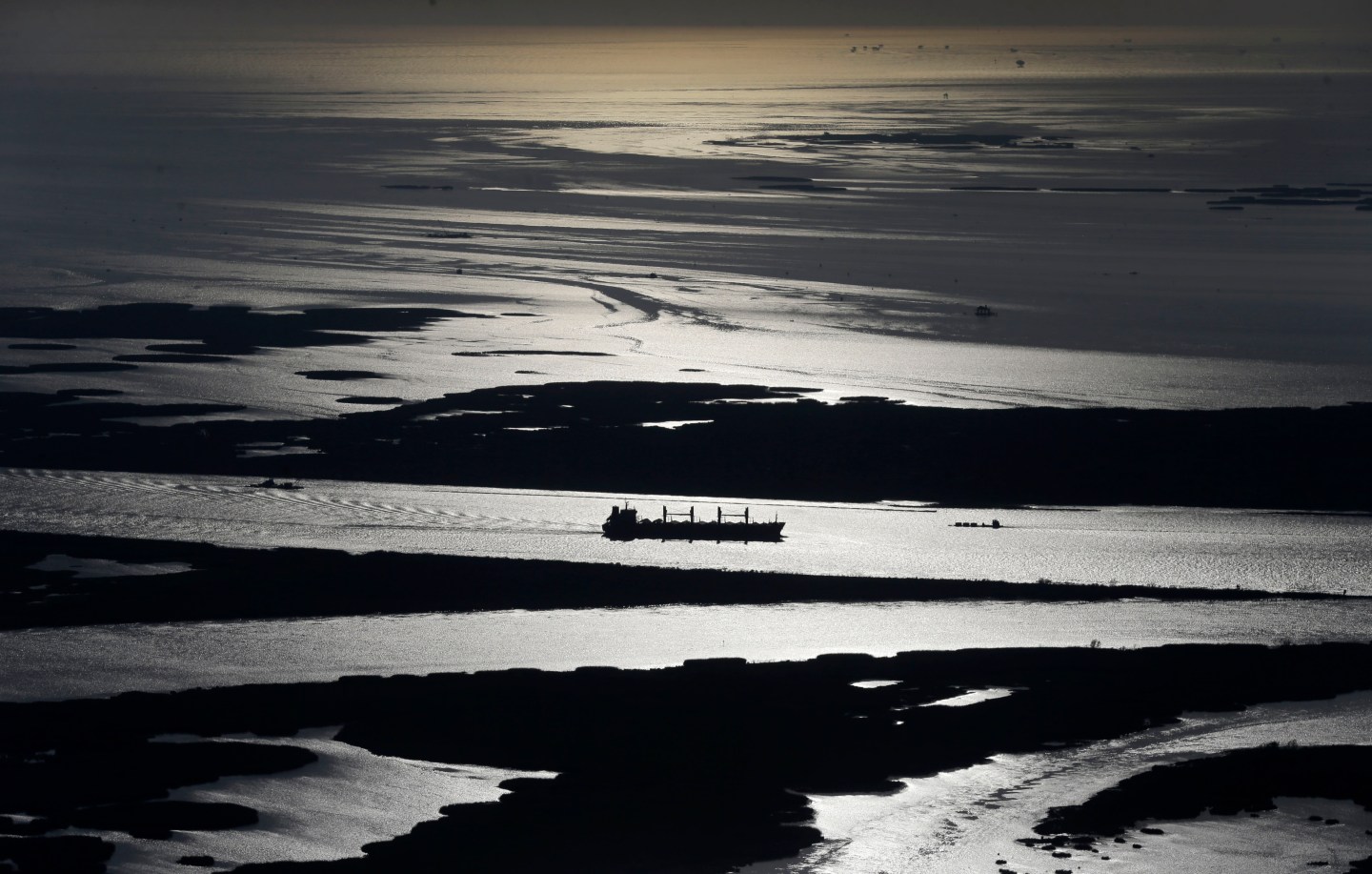Every year since 2011, millions of tons of rice have been loaded onto barges from farms in Arkansas and Louisiana and sent down the Mississippi River, headed for— wait for it—China. There are plenty of factors behind this seemingly backward supply chain: The Chinese government props up domestic prices to protect Chinese farmers, and American rice sells into the premium segment of the Chinese market.
Butanother major factor is the Mississippi itself, the trunk line of a massive, and massively efficient, natural transportation networkthat makes U.S. exports more competitive worldwide.Systemic changes will heighten the importance of the Mississippi in the 21st century, and geologists and navigators are hard at work to keep it vital.
The Mississippi is free of dams on the roughly 700-mile stretch from St. Louis to New Orleans, so it can accommodate massive trains of barges averaging more than 2,000 feet in length. These beasts are driven by as few as two small towboats, and with help from downriver flow carry a thousand tons of goods a mile with each gallon of fuel. This by far the most efficient shipping method within the U.S.—train shipping costs more than twice as much—and a huge input of renewable energy into theeconomy.
The Mississippi is more than one big river, though. “The Mississippi is tied to a 15,000-mile inland waterway system,” says Paul Kemp, a former LSU research geologist who now consults on ecology and transit issues related to the river. “That’s fairly unique in the world.” That network stretches as far northwest as Montana, and northeast to Pennsylvania.
The Mississippi will be increasingly important for U.S. competitiveness in the 21st century. Wagescontinue to equalize globally,encouraging “onshoring” of export-oriented manufacturing back to the U.S.Combined with an expanded Panama Canal, the Mississippi will provide a hyper-efficient trade route for goods and materials between the eastern U.S. and Asia.
The river’s gifts aren’t entirely free—channels are regularly dredged, and the naturally shifting riverbed has been reinforced. But some projects have had unintended consequences. Anti-flooding levees along the lower Mississippi have constrained the regular deposit of vital sand and silt since mass construction began in 1927, resulting in the progressive loss of more than 1,900 square miles of coastal land—a loss that has actually increasedflood risk.
Another challenge is the need for a deeper river mouth. The expanded Panama Canal, scheduled for completion in 2016, will allow ships with up to a 50-foot draft to traverse it, but the lower Mississippi stretch carrying ocean vessels to the ports of New Orleans, South Louisiana, and Baton Rouge is currently only 45 feet deep.Deeper dredging would be extremely costly.
“The navigation interests in Louisiana are not very happy,” says Kemp. “And of course from an ecological standpoint, it’s a disaster.”
The Environmental Defense Fund, a non-profit organization, is undertaking an effort to solve both problems. At Kemp’s urging, it launched a design competition dubbed “Changing Course,” aimed at finding a method to send silt and sand back onto the Delta while keeping it out of the shipping channel. The goal is to have its findings integrated into the State of Louisiana’s official 2017 master plan for Delta management.
“We want to help position the river,” Kemp says,“for a future where it’s doing a better job.”
Correction, May 12, 2015: The original version of this article erroneously stated that the Mississippi River had no dams from St. Paul to New Orleans. It is only free of dams from St. Louis to New Orleans. Additionally, it misstated the dimensions of the expanded Panama Canal. It will accommodate ships with up to a 50-foot draft.
